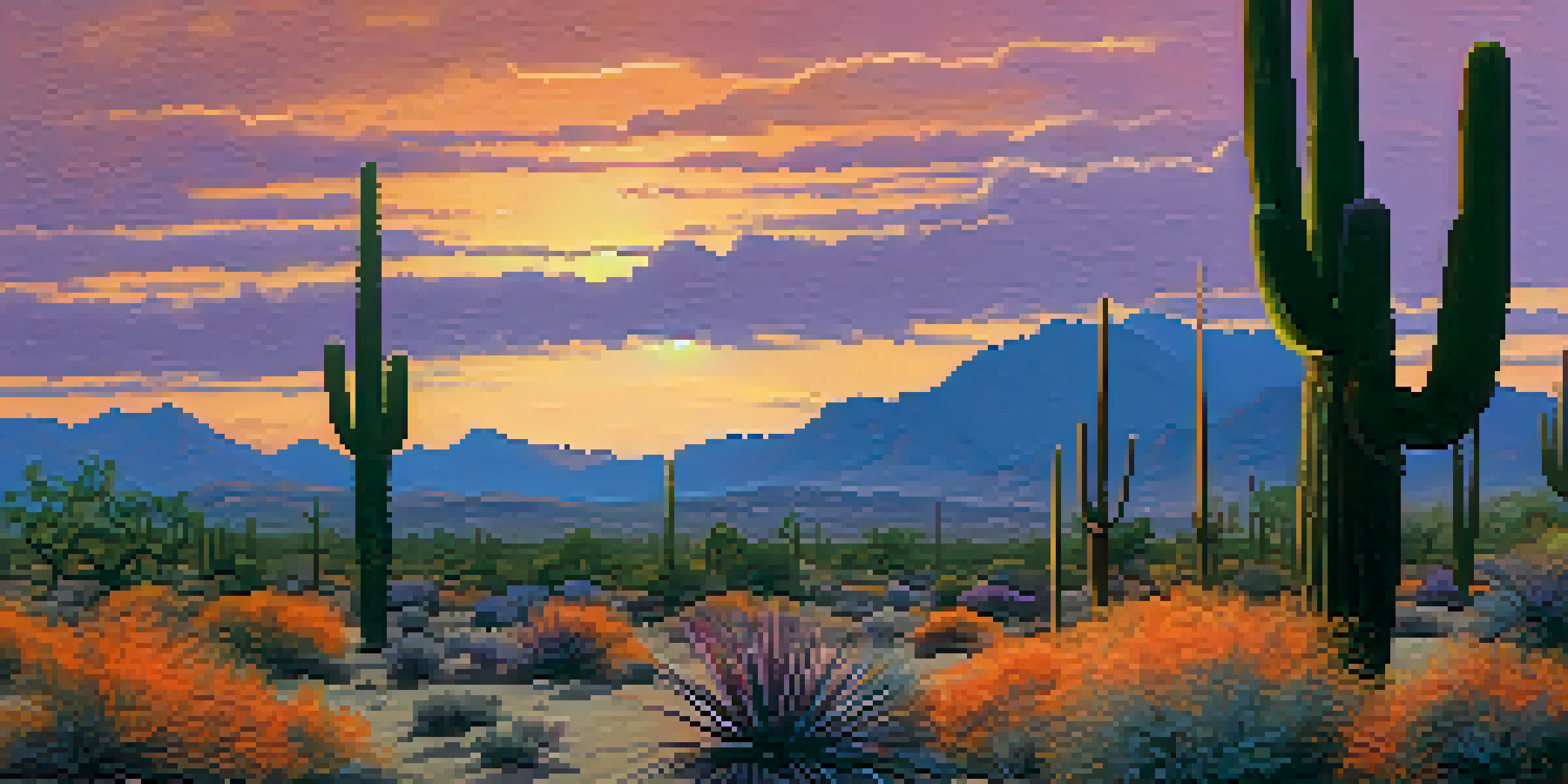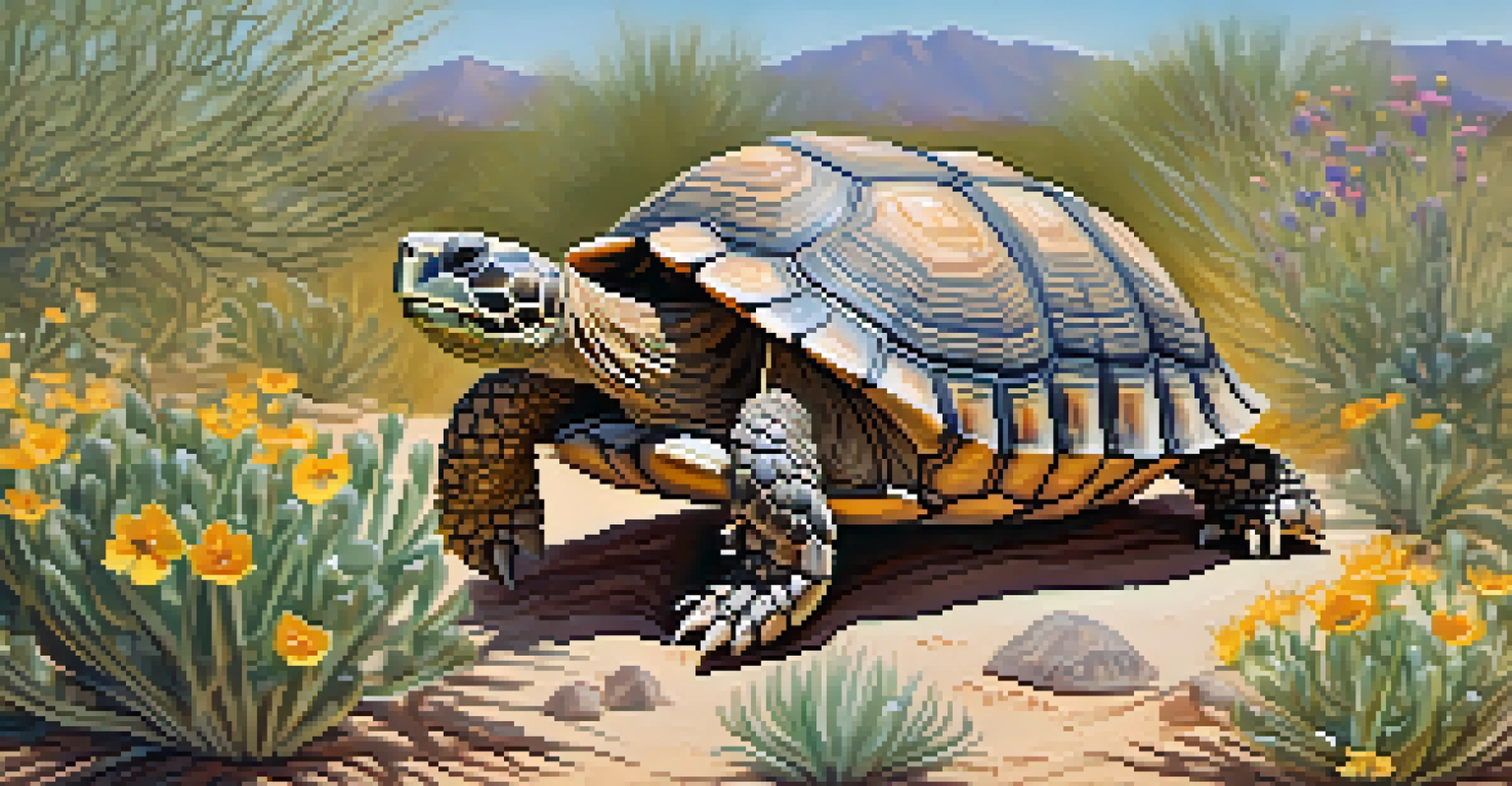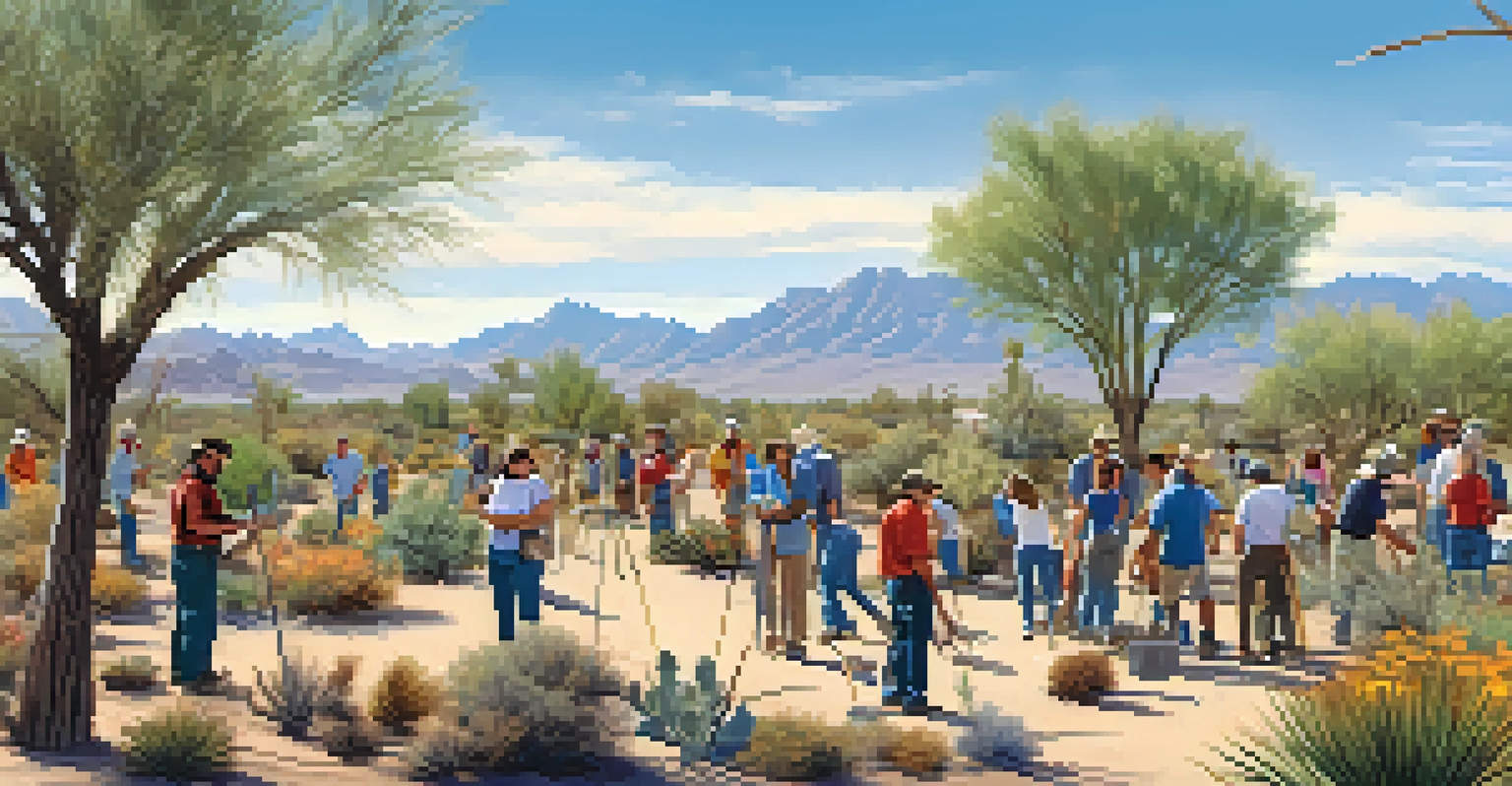Scottsdale's Desert Ecosystem: Unique Conservation Challenges

Understanding Scottsdale's Unique Desert Ecosystem
Scottsdale is home to a vibrant desert ecosystem, characterized by its unique flora and fauna. The Sonoran Desert, where Scottsdale lies, boasts a variety of plant species like saguaro cacti and ocotillo, along with diverse wildlife, including coyotes and roadrunners. This rich biodiversity not only contributes to the region's beauty but also plays a crucial role in maintaining ecological balance.
In every walk with nature one receives far more than he seeks.
However, the desert environment is delicate and can be easily disrupted. With climate change and urban development on the rise, the native species face increasing threats. Understanding this ecosystem is the first step toward effective conservation efforts, as it highlights the intricate relationships between organisms and their habitats.
Engaging local communities and educating them about the importance of preserving this ecosystem is vital. Through awareness and active participation, residents can help protect and sustain this unique environment for future generations.
Climate Change: A Growing Concern
One of the most pressing challenges for Scottsdale's desert ecosystem is climate change. Rising temperatures and unpredictable rainfall patterns can disrupt the delicate balance of this environment, affecting both plant and animal life. For instance, prolonged droughts can lead to the decline of native plants, which in turn impacts the animals that rely on them for food and shelter.

Moreover, climate change can exacerbate existing issues like invasive species. These non-native plants and animals can outcompete local species for resources, further threatening biodiversity. As the climate continues to shift, it's crucial to monitor these changes and adapt conservation strategies accordingly.
Climate Change Threatens Biodiversity
Rising temperatures and droughts disrupt the delicate balance of Scottsdale's desert ecosystem, impacting both plant and animal life.
Local conservation efforts must focus on resilience, helping the ecosystem to adapt to changing conditions. By implementing sustainable practices and promoting biodiversity, Scottsdale can better protect its desert environment from the impacts of climate change.
Urban Development and Habitat Loss
As Scottsdale grows, urban development poses significant challenges to the desert ecosystem. Expanding neighborhoods and commercial areas often encroach upon natural habitats, leading to habitat fragmentation. This disruption can isolate animal populations, making it difficult for them to find mates and food, ultimately threatening their survival.
The environment is where we all meet; where we all have a mutual interest; it is the one thing all of us share.
To illustrate, consider the plight of the desert tortoise, a species that relies on specific habitats for breeding and foraging. As urban sprawl continues, these areas become increasingly scarce, putting additional pressure on their populations. Such examples highlight the urgent need for thoughtful planning and conservation efforts amid growth.
Creating wildlife corridors and preserving green spaces are essential strategies to mitigate the impacts of urbanization. By prioritizing these initiatives, Scottsdale can maintain its unique desert ecosystem while accommodating growth and development.
Invasive Species: A Threat to Native Biodiversity
Invasive species are another significant challenge facing Scottsdale's desert ecosystem. These non-native plants and animals can disrupt local ecosystems by outcompeting native species for resources like water and nutrients. For example, the buffelgrass, which thrives in arid conditions, can rapidly spread and choke out native vegetation, altering the landscape.
The presence of invasive species can also lead to a decline in local wildlife populations. When native plants disappear, the animals that depend on them for food and shelter are left vulnerable. This creates a ripple effect, impacting the overall health of the ecosystem.
Urban Development Causes Habitat Loss
Expanding neighborhoods fragment natural habitats, making it harder for wildlife to thrive and survive in Scottsdale.
Addressing the issue of invasive species requires a combined effort from local authorities, conservation groups, and the community. Implementing removal programs and promoting native plant landscaping can help restore balance and protect Scottsdale's unique biodiversity.
Water Scarcity: A Critical Resource Issue
Water scarcity is a critical issue that poses a challenge for Scottsdale's desert ecosystem. The region relies on limited water resources, which are further strained by increasing population demands and climate change. This scarcity impacts not only the native plants and animals but also the overall health of the ecosystem.
For instance, native plants have adapted to survive in arid conditions, but excessive water withdrawal can disrupt their growth cycles. Additionally, wildlife depends on these plants for sustenance; without adequate water, both flora and fauna face significant survival challenges.
Promoting water conservation practices is essential for protecting Scottsdale’s desert ecosystem. By educating the community about sustainable water use and investing in efficient irrigation systems, we can help preserve this vital resource for the future.
Community Involvement in Conservation Efforts
Community involvement plays a pivotal role in the conservation of Scottsdale's desert ecosystem. Engaging local residents in conservation initiatives not only raises awareness but also fosters a sense of stewardship for the environment. When people feel connected to their natural surroundings, they are more likely to take action to protect them.
For example, community-led clean-up events and native planting days can significantly impact local habitats. These efforts create a tangible connection between residents and their environment, empowering them to contribute positively to conservation efforts. Additionally, educational programs in schools can instill a love for nature in younger generations.
Community Involvement is Essential
Engaging local residents in conservation efforts fosters stewardship and connection to Scottsdale's unique desert environment.
By working together, the community can develop innovative solutions to conservation challenges. Collaboration among residents, local organizations, and governmental bodies can lead to successful initiatives that protect and preserve Scottsdale's unique desert ecosystem.
Future Outlook: Strategies for Sustainable Conservation
Looking ahead, developing sustainable conservation strategies is crucial for the future of Scottsdale's desert ecosystem. This involves a multi-faceted approach that includes habitat restoration, species protection, and community engagement. By prioritizing these areas, we can help mitigate the impacts of urban development and climate change.
For instance, implementing land-use policies that prioritize conservation can help protect vital habitats. Additionally, investing in research to monitor ecosystem health will enable conservationists to respond swiftly to emerging threats. Such proactive measures are essential for safeguarding biodiversity.

Ultimately, the future of Scottsdale's desert ecosystem lies in our hands. By committing to sustainable practices and fostering community collaboration, we can ensure that this unique environment thrives for generations to come.